This plan is for a great bench that also doubles as shoe storage. The original plan used dados, this version uses pocket holes* for the joinery instead. Obviously everyone will have a different size of bench to fit their need, so I created the plans with a customizable spreadsheet. Enter in the desired bench length, height, and depth along with how many columns you want and it’ll spit out the numbers for the plan. The amount of wood and plywood you need depends on your bench size. * denotes affiliate link
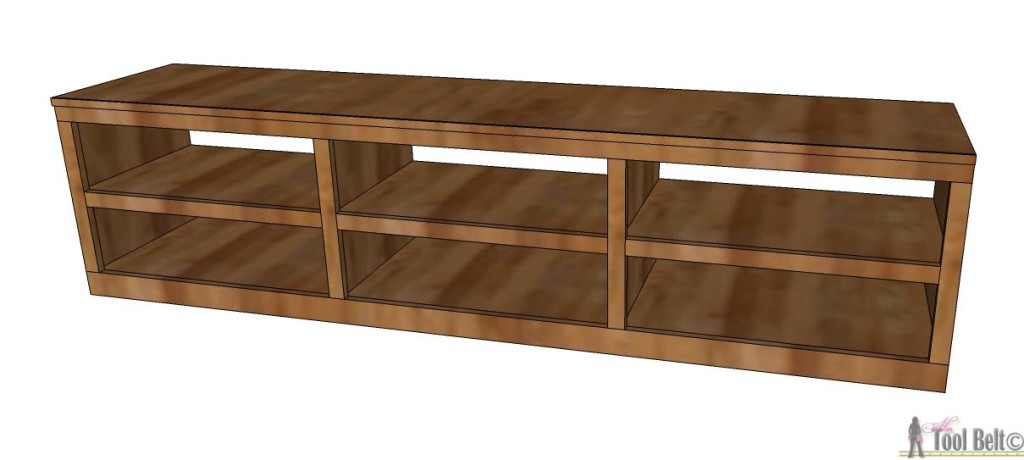
How to Build a Shoe Shelf Bench using Pocket Holes
Materials Needed
- 3/4″ plywood
- 1/2″ plywood (optional – you can use 1/2″ or 3/4″ for the shelves)
- solid wood boards that are 3/4″ thick
- 3/4″ wide molding
- wood glue
- sand paper
- 3/4″ or longer brad nails
- 1 1/4″ pocket hole screws*
- 1″ pocket hole screws* (if using 1/2″ plywood shelves)
- wood filler
- wood conditioner/stain
- paint/primer
- top coat (polyurethane or polycrylic)
- brushes
- 3″ cabinet screws or self tapping screws
This plan uses Kreg pocket holes*, if you would rather use dados see this plan.
I used maple hardwood for the solid wood and birch plywood for this bench because I was planning on staining it. When I am going to stain a project, I usually like to use better wood like alder, maple, oak, cherry, etc. Pine is cheap, but doesn’t take stain very evenly. If you’re going to paint the bench, it doesn’t really matter so go as cheap as you want.
Step 1
Download the customizable shoe-shelf bench with pocket holes spreadsheet. This file is an Excel spreadsheet, when you download and open it, it may ask you at the top to enable editing – click enable editing. In the top green cells – fill in your bench length, height – mine is 20″, depth – mine is 17 1/4″, and the number of columns or vertical sections – mine is 3. If you have trouble with the spreadsheet, leave me a comment with your dimensions and email and I’ll send you your dimensions.
Example spreadsheet – These are my dimensions
Bench components by color and letter.
Step 2
Cut pieces A, B, C and D for the face frame. Drill pocket holes in both ends of the C and D pieces, as shown. Reference K and L measurements from the spreadsheet. Use wood glue and 1 1/4″ pocket hole screws to assemble your face frame together. Allow the glue to dry, remove excess glue. Add 3 or so pocket holes along the top of B to attach the top later.
Step 3
Cut the pieces for E and H from 3/4″ plywood, F and G from 3/4″ or 1/2″ plywood. In the E panels, drill about 3 pocket holes along a 19 1/4″ side, and 1 near the back corner to attach the top. Use wood glue and 1 1/4″ pocket hole screws to attach the sides (E) to the face frame, making the sides flush with the edge of the face frame. Attach the top (H) to the top of the face frame and sides with glue and screws.
Step 4
In the F and G shelf pieces, drill pocket holes to attach to the face frame (about 3) and to the side panels (2 or 3 on each side). Use wood glue and screws (1 1/4″ or 1″ depending on plywood thickness) to attach the upper shelves (F & G) to the face frame and sides, adding in the other side dividers (E) as you go. Make the shelves flush with the face frame opening.
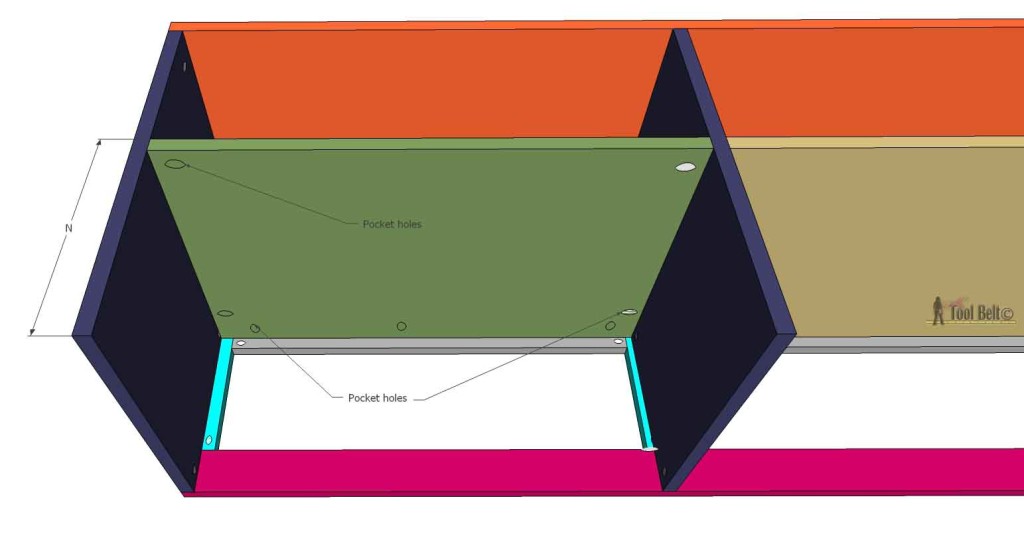 After installing the upper shelves, install the lower shelves. Make the shelf flush with the face frame opening.
After installing the upper shelves, install the lower shelves. Make the shelf flush with the face frame opening.
Step 5
To cover up the top piece plywood edge, I like to route a cute edge on a 3/4″ thick board, cut off the routing about 1/4″ thick. Glue and nail the molding into place. If the sides of your bench will be seen, add molding to the sides too. You can easily purchase molding to cover up the plywood edge too.
Step 6
Fill any cracks, blemishes or nail holes with wood filler and allow to fully dry. Sand your bench, finishing with 120-150 grit paper. If staining, apply wood conditioner according to the directions. This helps even out the stain penetration. I stained my bench with General Finishes Gel Nutmeg, it gave it a nice honey color. I applied 1-2 coats of polyurethane for the top coat. If painting, apply a paint primer and allow to dry. Paint the bench your favorite color. I would suggest giving the bench a top coat, polycrylic works great.
Step 7
If you want to mount your bench to the wall, locate the studs. I mounted mine through the 2 outside E pieces. Mark the approximate location of the studs on the bench in a few locations and pre-drill a hole through E. Use 2 1/2″ – 3″ cabinet screws or self tapping screws, secure the bench to the wall.
If you want a printable pdf, you can download the blueprints below.
Shoe Shelf Bench using Pocket Holes blueprints
I hope you enjoy your Shoe Shelf Bench as much as we have. Need pillows to decorate your bench, check out my Painted Pillows. On the opposite wall from the bench is my Gallery Command Center.

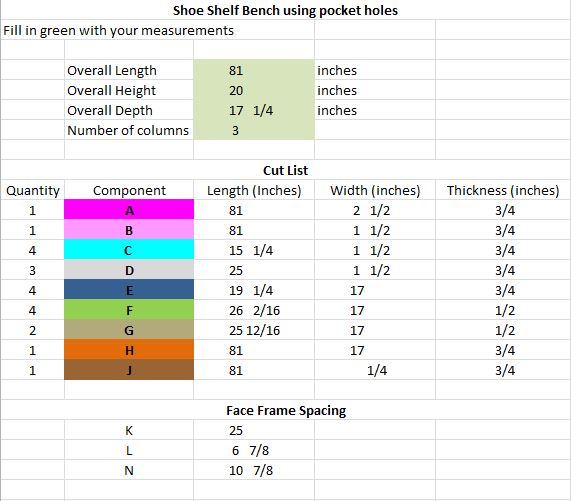

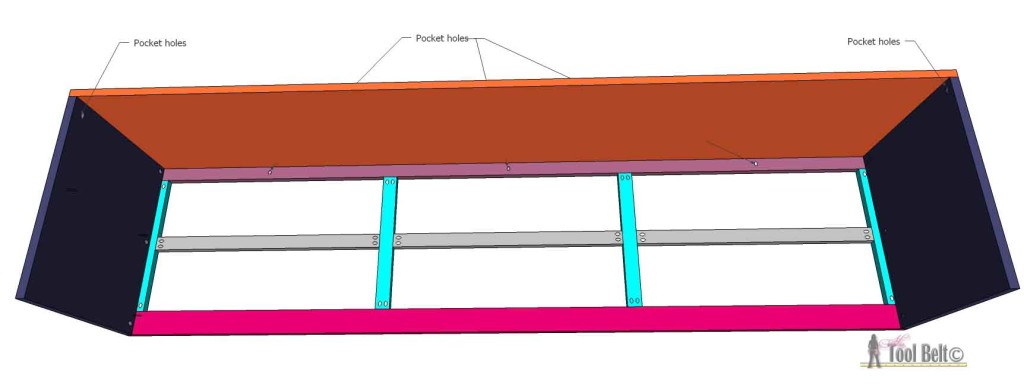
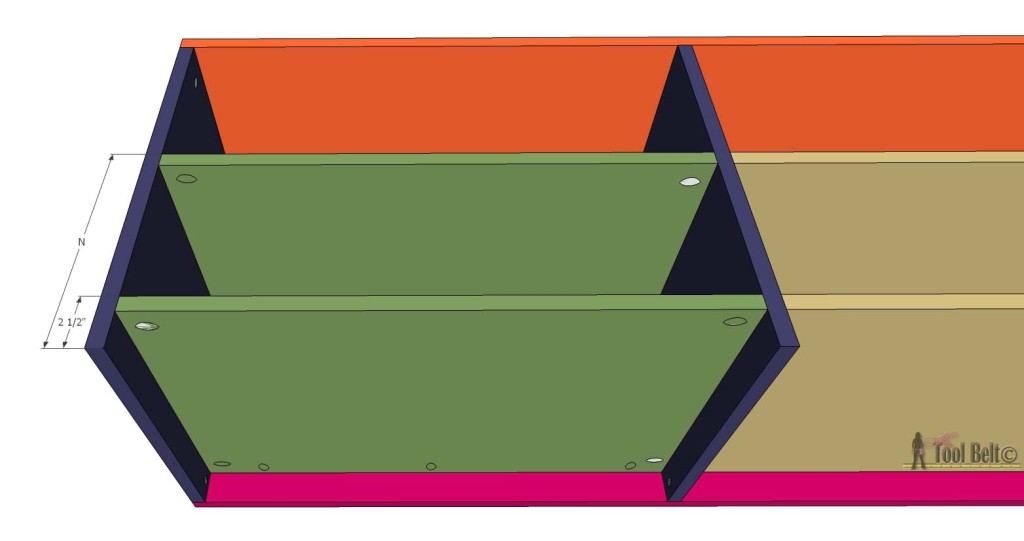

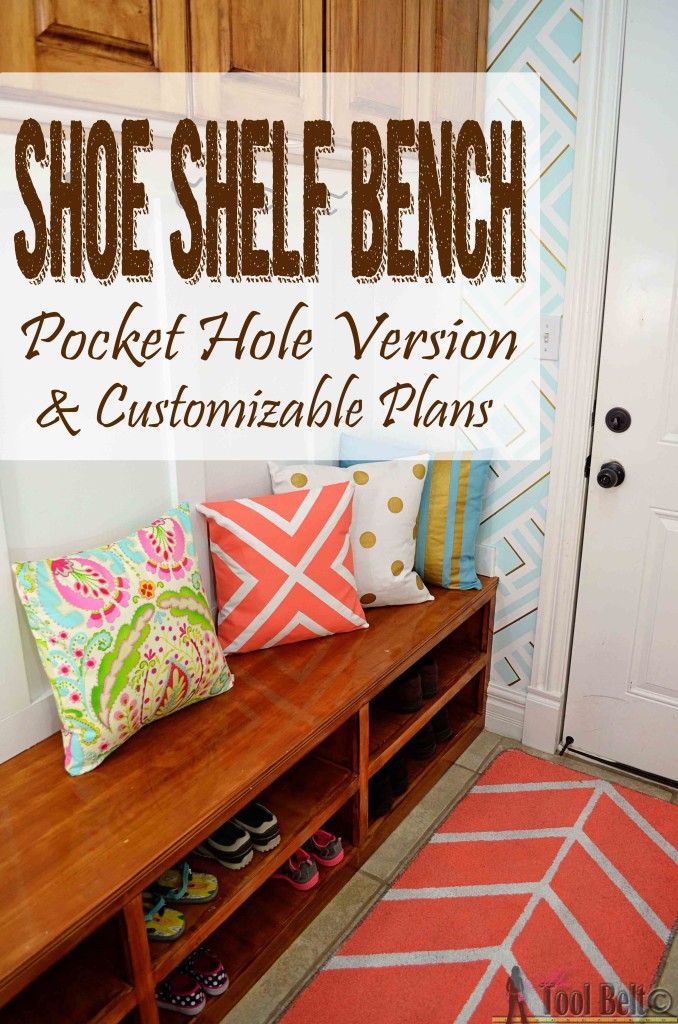
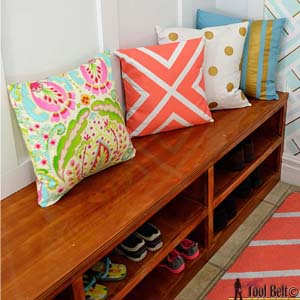
It turned out great. Can’t wait to work on something together 🙂